What Happened When One Woman Finally Decided to Embrace Her Natural Hair
After months of soul-searching, Jihan Thompson has made a decision: She’s embracing her hair as nature intended it—and O’s coming along on the journey.
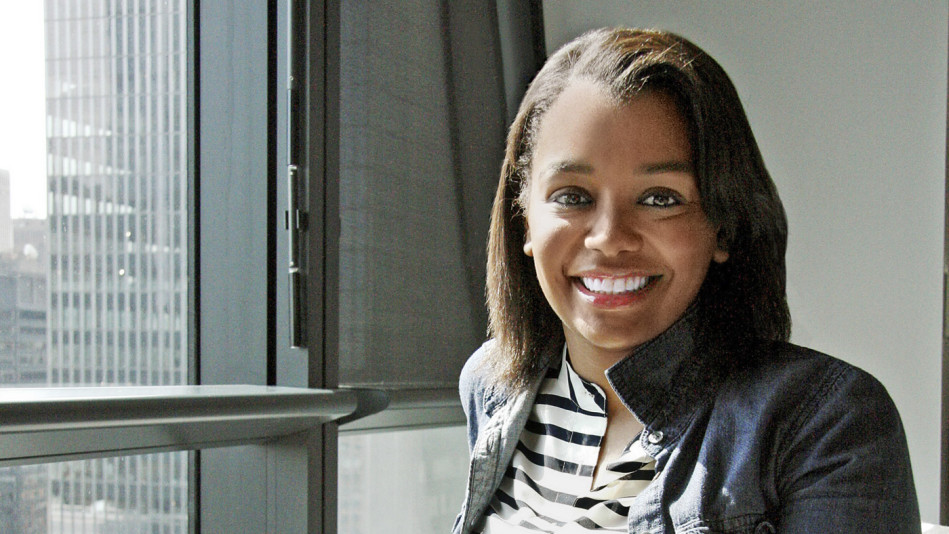
Photo: Deirdre Read
Read part 2 of Jihan's hair adventure, 8 months later.
I was 13 when I got my first relaxer. For months I’d begged my mom to let me do it: I wanted to look like the black girls on the relaxer boxes, with straight, silky hair you could run your fingers through. I didn’t dislike my natural hair, but I was ready for something more grown-up than braids. Relaxing was a rite of passage, like getting my ears pierced or shaving my legs.
We picked out a mild “kiddie perm,” and in our kitchen my mom combed the cream through, rinsed, shampooed, and conditioned. Less than an hour later, I had straight hair. In the past I’d cried when my mother struggled to comb out my kinky strands, but now we could get a brush through them without a single tangle. I’ve been getting relaxers ever since, and so have most of my friends.
But in the last five to ten years, black beauty bloggers have led a natural revolution, challenging the cultural notion that only straight, glossy hair can be stunning. It was liberating to see them celebrating their hair instead of trying to “tame” it into submission.
My best friend decided to go natural, and we discovered she’d been hiding a bounty of bouncy curls. I was jealous of her hair’s gorgeous fullness; years of relaxing had started to leave mine limp. Then another friend stopped perming, then another.
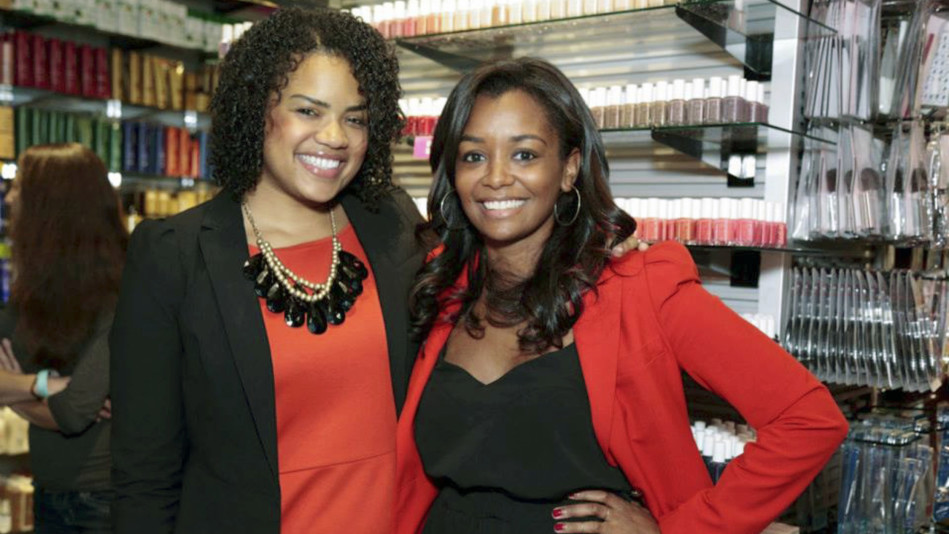
With my best friend Jennifer Lambert, who spent years hiding those amazing curls.
Even my mom made the leap. In the ’70s, she’d proudly sported an Afro, but since the ’80s, she’d been chemically straightening. Finally she’d gotten fed up with the way relaxers had left her hair brittle and thin.

My mom's natural look in 1973.
As anyone who’s had a relaxer can tell you, the process is not relaxing: A stylist applies harsh chemicals to your roots, then works them through to relax any growth since your last treatment. If the chemicals are left on too long, your scalp starts to burn, so stylists routinely ask, “Are you feeling it yet?” That’s a sign they need to rinse before the hair is singed off your head. Many times I’ve felt tingling and thought, You can hold on another minute. Which is insane—these are chemicals!—but I wanted to get the most bang for my buck.
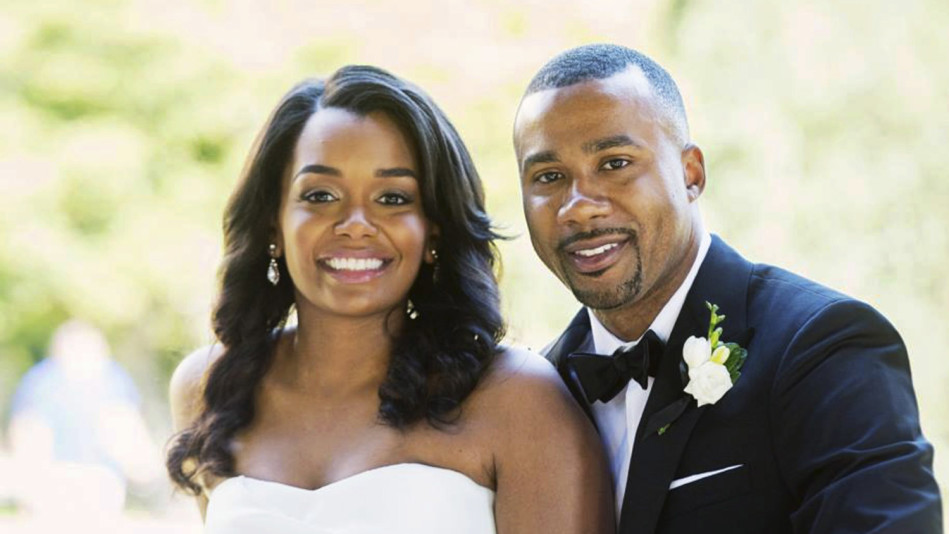
I opted for major extensions on my wedding day in 2015.
I’ve spent a small fortune on my hair over the course of my lifetime: relaxers every eight weeks, blow-outs every two, plus deep conditioners, haircuts, and the occasional weave (rough estimate of what I've spent on hair relaxers since age 13: $20,000. Rough estimate of how much I've spent on blow-outs, deep conditioners, haircuts and weaves: $40,000. Approximate hours I've spent getting relaxers: 378). Now that my friends were giving up the whole exhausting regimen, I realized how weary I was. I clicked through YouTube tutorials and thought what a relief it would be to let go.
One reason I was on the fence: I don’t love the prospect of enduring awkward months wrestling with two textures. Or chopping off the relaxed ends and dealing with a tiny Afro until my hair is long enough for the styles I’m pinning and hearting all over social media.
Also, I’ve always liked my hair straight. I don’t even know what my natural hair is like: I haven’t seen it since 1996. My husband has only known me with straight hair. It seemed silly, but—would he care? I showed him photos of what to expect, and he gave the project a thumbs-up.
Finally, after months of debating with my friends who’d gone natural and chatting up strangers about their process, I decided to take the plunge. Early last August, I went for one last relaxer, so I could show the photos to my stylist, Vikki Chambers-Williams at Styles Beauty Lounge in New York City, and make sure we were on the same page. Vikki told me it would take about a year to fully grow out my relaxer and closer to two years to get curls (or kinks or coils) beyond my ears. While I’m growing it out, I’ll get regular blow-outs and deep conditioners, plus trims every six weeks to limit breakage. Vikki also warned me that natural hair requires just as much maintenance as processed hair: It’s usually drier, so you need at-home deep conditioners. Plus, many Pinterest-worthy natural hairstyles (like the popular two-strand twist) require a lot of manipulation. Even a simple wash-and-go can take several hours of shampooing, conditioning, and styling—all to achieve a look that appears effortless. But my mind’s made up: I’m excited to see how my hair will look. Mostly because it will be mine.
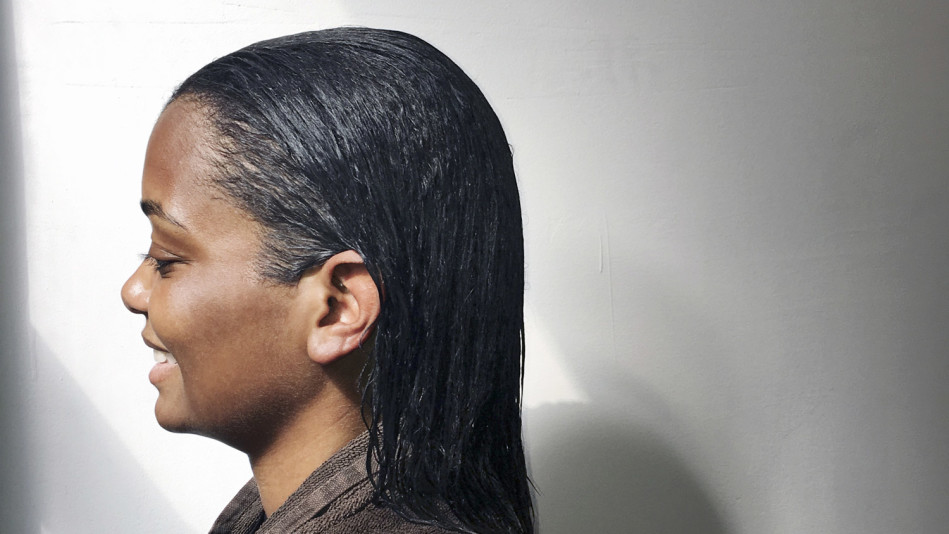
After my last relaxer in August (goodbye chemicals!).
It’s been four months now since my last relaxer, and when I try to run my fingers through my hair, I can’t get very far. Sometimes I feel my kinky roots—about a couple of inches at this point—and wonder, What have I gotten myself into?
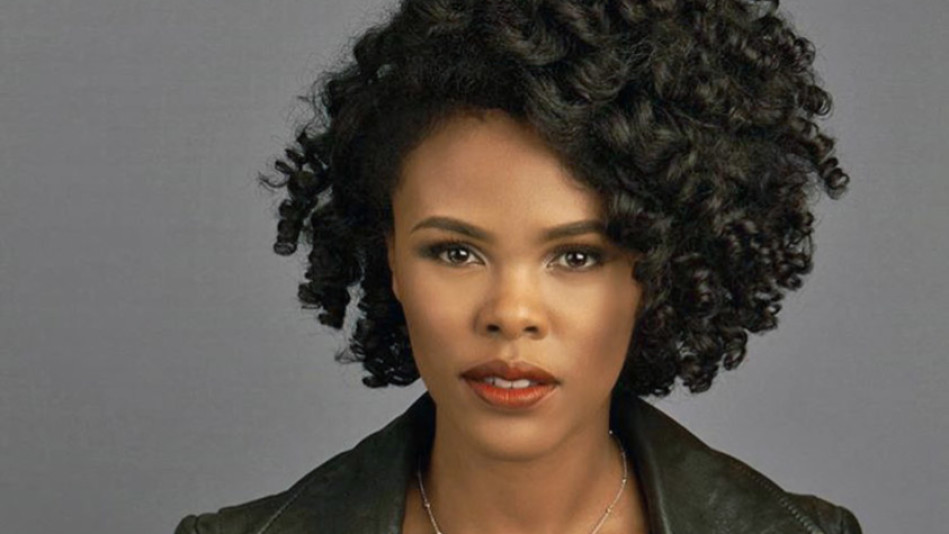
#HAIRGOALS: Blogger Nikki Walton (@CurlyNikki) is my curl crush. If my hair ever looks like this (I won't know for a few years), I'll be ecstatic.
But I also feel free. I’m thrilled to give up my old labor-intensive beauty routine. Something else has changed, too. After my most recent blow-out, I stared into the mirror, checking out this new texture. The choice to appreciate my natural hair—whatever it’s like—is surprisingly empowering. It feels good to get back to my roots.
Jihan's Hairstory
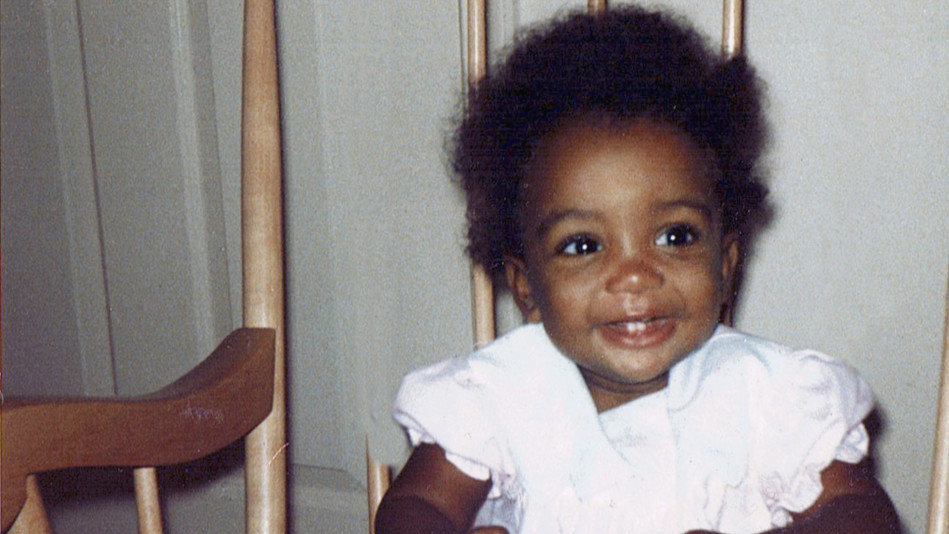
1982: My hair in its most natural state. I favored a low-maintenance look: just a little baby shampoo and hair oil.

1998: I insisted on having my hair relaxed, but then I usually just pulled it back to keep it out of my face during sports.
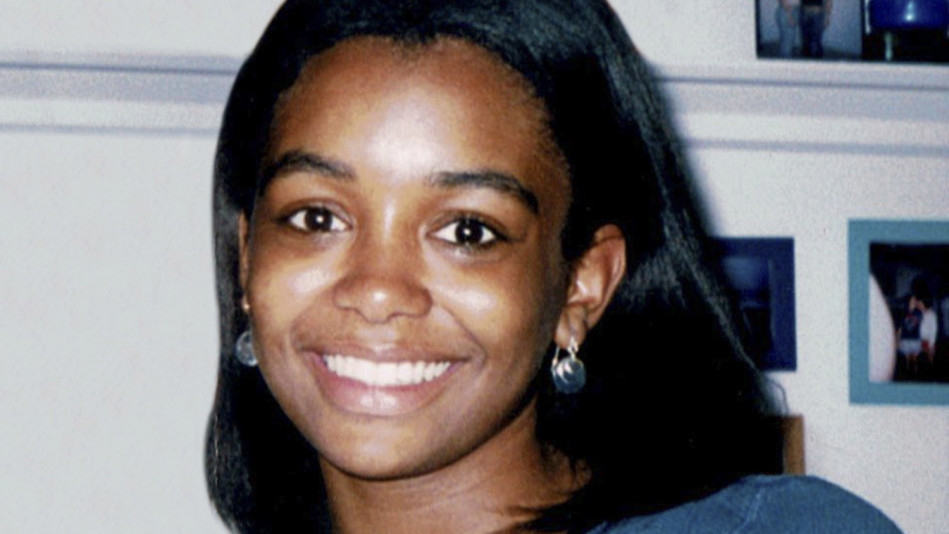
2003: Once I got comfortable with styling, I did a side part, ends curled under—my signature looks for years.
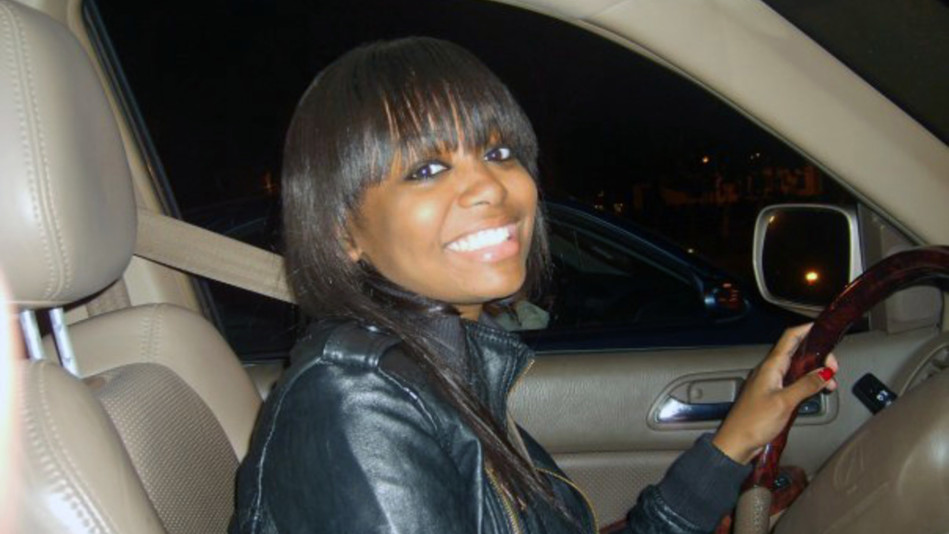
2009: After college I went crazy for a while, broadening my hair horizons. Bangs! Extensions! A bob!
Photos from top: Cassidy Duhon, Courtesy of JIhan Thompson (3), Courtesy of Dr. Eugene Walton Jr./Curly Nikki, Courtesy of Jihan Thompson (4).
Jihan Thompson is a writer, editor, and cofounder of Swivel Beauty, an app that makes it easy for women of color to find the best stylists and salons.
I was 13 when I got my first relaxer. For months I’d begged my mom to let me do it: I wanted to look like the black girls on the relaxer boxes, with straight, silky hair you could run your fingers through. I didn’t dislike my natural hair, but I was ready for something more grown-up than braids. Relaxing was a rite of passage, like getting my ears pierced or shaving my legs.
We picked out a mild “kiddie perm,” and in our kitchen my mom combed the cream through, rinsed, shampooed, and conditioned. Less than an hour later, I had straight hair. In the past I’d cried when my mother struggled to comb out my kinky strands, but now we could get a brush through them without a single tangle. I’ve been getting relaxers ever since, and so have most of my friends.
But in the last five to ten years, black beauty bloggers have led a natural revolution, challenging the cultural notion that only straight, glossy hair can be stunning. It was liberating to see them celebrating their hair instead of trying to “tame” it into submission.
My best friend decided to go natural, and we discovered she’d been hiding a bounty of bouncy curls. I was jealous of her hair’s gorgeous fullness; years of relaxing had started to leave mine limp. Then another friend stopped perming, then another.

With my best friend Jennifer Lambert, who spent years hiding those amazing curls.
Even my mom made the leap. In the ’70s, she’d proudly sported an Afro, but since the ’80s, she’d been chemically straightening. Finally she’d gotten fed up with the way relaxers had left her hair brittle and thin.

My mom's natural look in 1973.
As anyone who’s had a relaxer can tell you, the process is not relaxing: A stylist applies harsh chemicals to your roots, then works them through to relax any growth since your last treatment. If the chemicals are left on too long, your scalp starts to burn, so stylists routinely ask, “Are you feeling it yet?” That’s a sign they need to rinse before the hair is singed off your head. Many times I’ve felt tingling and thought, You can hold on another minute. Which is insane—these are chemicals!—but I wanted to get the most bang for my buck.

I opted for major extensions on my wedding day in 2015.
I’ve spent a small fortune on my hair over the course of my lifetime: relaxers every eight weeks, blow-outs every two, plus deep conditioners, haircuts, and the occasional weave (rough estimate of what I've spent on hair relaxers since age 13: $20,000. Rough estimate of how much I've spent on blow-outs, deep conditioners, haircuts and weaves: $40,000. Approximate hours I've spent getting relaxers: 378). Now that my friends were giving up the whole exhausting regimen, I realized how weary I was. I clicked through YouTube tutorials and thought what a relief it would be to let go.
One reason I was on the fence: I don’t love the prospect of enduring awkward months wrestling with two textures. Or chopping off the relaxed ends and dealing with a tiny Afro until my hair is long enough for the styles I’m pinning and hearting all over social media.
Also, I’ve always liked my hair straight. I don’t even know what my natural hair is like: I haven’t seen it since 1996. My husband has only known me with straight hair. It seemed silly, but—would he care? I showed him photos of what to expect, and he gave the project a thumbs-up.
Finally, after months of debating with my friends who’d gone natural and chatting up strangers about their process, I decided to take the plunge. Early last August, I went for one last relaxer, so I could show the photos to my stylist, Vikki Chambers-Williams at Styles Beauty Lounge in New York City, and make sure we were on the same page. Vikki told me it would take about a year to fully grow out my relaxer and closer to two years to get curls (or kinks or coils) beyond my ears. While I’m growing it out, I’ll get regular blow-outs and deep conditioners, plus trims every six weeks to limit breakage. Vikki also warned me that natural hair requires just as much maintenance as processed hair: It’s usually drier, so you need at-home deep conditioners. Plus, many Pinterest-worthy natural hairstyles (like the popular two-strand twist) require a lot of manipulation. Even a simple wash-and-go can take several hours of shampooing, conditioning, and styling—all to achieve a look that appears effortless. But my mind’s made up: I’m excited to see how my hair will look. Mostly because it will be mine.

After my last relaxer in August (goodbye chemicals!).
It’s been four months now since my last relaxer, and when I try to run my fingers through my hair, I can’t get very far. Sometimes I feel my kinky roots—about a couple of inches at this point—and wonder, What have I gotten myself into?

#HAIRGOALS: Blogger Nikki Walton (@CurlyNikki) is my curl crush. If my hair ever looks like this (I won't know for a few years), I'll be ecstatic.
But I also feel free. I’m thrilled to give up my old labor-intensive beauty routine. Something else has changed, too. After my most recent blow-out, I stared into the mirror, checking out this new texture. The choice to appreciate my natural hair—whatever it’s like—is surprisingly empowering. It feels good to get back to my roots.
Jihan's Hairstory

1982: My hair in its most natural state. I favored a low-maintenance look: just a little baby shampoo and hair oil.

1998: I insisted on having my hair relaxed, but then I usually just pulled it back to keep it out of my face during sports.

2003: Once I got comfortable with styling, I did a side part, ends curled under—my signature looks for years.

2009: After college I went crazy for a while, broadening my hair horizons. Bangs! Extensions! A bob!
Photos from top: Cassidy Duhon, Courtesy of JIhan Thompson (3), Courtesy of Dr. Eugene Walton Jr./Curly Nikki, Courtesy of Jihan Thompson (4).
Jihan Thompson is a writer, editor, and cofounder of Swivel Beauty, an app that makes it easy for women of color to find the best stylists and salons.



